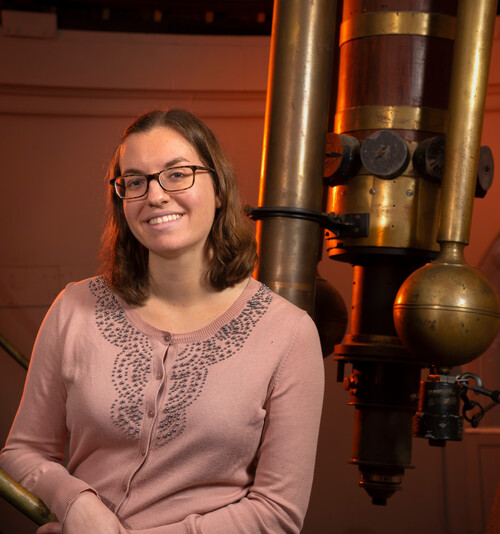Catherine Zucker

“All of us have seen Hubble images of external galaxies,” says Catherine Zucker, a PhD candidate in astronomy. “But it is difficult to tell whether our own galaxy, the Milky Way, looks like any of those spiral galaxies. That’s because we’re observing our galaxy from inside it, and don’t have a face-on view.”
As part of her dissertation work, Zucker set out to produce a new map of our galactic neighborhood in the Milky Way galaxy. Combining data on the colors and distances of stars with statistics and data visualization, she mapped out the 3D distribution of stellar nurseries, which has never been done on such a large scale.
“We’ve been studying these stellar nurseries for hundreds of years without knowing what they looked like in a galactic context,” she says. “Data visualization helps us see our galactic neighborhood in 3D, when most of the images we study are in 2D.”
Zucker’s initial goal was to create the most precise 3D map of stellar nurseries. However, in the process, she and her collaborators uncovered something else. “Amazingly, we discovered a 9,000 light-year long string of stellar nurseries, which takes the form of a gigantic sine wave,” she says. This sine wave, now called the Radcliffe Wave, helps define the shape of the “local” arm in our corner of the Milky Way Galaxy. It is the largest coherent star-forming structure in the galaxy ever discovered. “It’s been right here in front of our noses, but we couldn’t see it because we didn’t have a good 3D map.”
Zucker’s work provides unprecedented accuracy about the distances to stellar nurseries, which helps astronomers better understand how stars form. “We can now say that we know where we live in our Milky Way galaxy, and where new stars like our sun will be born.”

